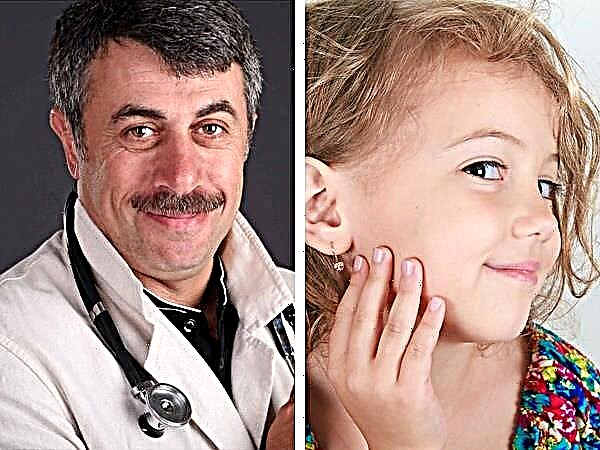Sooner or later the time comes when you need to stop breastfeeding, and you need to somehow stop lactation of milk. And here certain difficulties arise. Weaning your baby is easy (see how to do it simply). But how do you make the milk go away? Unpleasant “chewing” sensations in swollen breasts, underwear wet from milk - which woman is not familiar with these sensations?
There are many ways to stop lactation. The best thing is to make this process slow, gradual, natural. This will help prevent breast inflammation (and worst of all, mastitis), stretch marks and sagging breasts.
Consider ways to stop lactation at home and with the help of special drugs.

Natural ways
Feed reduction method
The most ideal solution is to stop breastfeeding gradually, naturally. To do this, shorten one feed first. Once the child gets used to it, remove the other, then the third. Express milk in between, leaving a little milk in your breast each time. Let it “burn out” gradually. Do not allow strong swelling of the breasts, otherwise painful sensations are inevitable. Stop feeding your baby completely at night (see how to do it).
After a while, you will see that there are fewer and fewer rush of milk in the breast. Milk itself arrives in smaller quantities. This is the easiest and most natural way to reduce lactation.
Can the chest be pulled?

More recently, it was believed that to stop lactation, the breast should be tightly bandaged with an elastic bandage or other bandages. There is little benefit from this, but you can harm yourself. A tight bandage interferes with blood flow to the chest. Blood circulation deteriorates. How much milk has come in, you also do not feel. This can lead to stagnation of milk in the mammary glands, cause lactostasis and such a dangerous disease as mastitis.
Reading an article on lactostasis
And here is all about mastitis
So just put on a comfortable bra. It is good if it is made of cotton fabric, without inserted "bones", dense, that is, something like a corset. In addition, this will help reduce the risk of stretch marks from overcrowded breasts and prevent sagging.
Can I reduce lactation with foods?
There are simply no products that can help reduce lactation. But it is undesirable to eat salty, smoked and spicy food, because it can provoke thirst. Drinking plenty of fluids will cause a rush of milk when it has almost disappeared. Therefore, try not to eat these foods, limit the amount of liquid, exclude juicy foods.
Folk recipes
 At home, herbal decoctions, primarily from diuretic herbs, help to reduce the flow of milk. These include lingonberry, bearberry, sage, parsley, basil. Their infusions help to remove excess fluid from a woman's body. This reduces the production of milk by the mammary glands.
At home, herbal decoctions, primarily from diuretic herbs, help to reduce the flow of milk. These include lingonberry, bearberry, sage, parsley, basil. Their infusions help to remove excess fluid from a woman's body. This reduces the production of milk by the mammary glands.
It is not difficult to prepare an infusion of these herbs. Take two tablespoons of one of the above herbs, pour into a ceramic cup or thermos. Pour 400 ml of boiling water, close the lid. After two hours, you can drink. Drink the infusion instead of water. It is allowed to drink up to 6 glasses of infusion per day. Soon after you start taking it (around the fourth day), you will feel significant relief. The breasts will become softer and the milk supply will decrease.
Belladonna, horsetail, jasmine, white cinquefoil, elecampane are also diuretics. They are brewed and taken exactly according to the instructions written on the package.
Peppermint infusion helps well. In addition to a diuretic, it is also a sedative. Pour 3 tablespoons of mint herb, chop, into a thermos. Add two and a half cups of boiling water there. Leave for an hour, strain, drink 300 ml a day, dividing them into three doses, on an empty stomach.
Store cooked flocks in the refrigerator for no more than two days.
A well-known herb - sage will help you to reduce and then stop lactation. It not only quickly blocks milk production, but also helps to strengthen a woman's immunity, improve her genitourinary system. Prepare a decoction from it in the same way as from diuretic herbs. Take half a teacup three times a day. You will see the effect soon enough. Already after four days, the amount of milk will be significantly reduced.
If you are nervous, it is psychologically difficult for you, drink soothing herbs - mint, motherwort, valerian.
By reducing the amount of any liquid (including soups and milk), milk flow can be reduced.
Compresses
From folk methods, you can still suggest using a variety of compresses.
- Camphor compress. Take camphor oil and lubricate your breasts (excluding the nipples) every four hours for three days. Be sure to wrap up with a warm scarf or shawl. If you experience severe distension, tingling, or discomfort, take paracetamol.
- Cabbage leaf compress. It is believed that they help to “burn” milk, make the breast softer. For the compress, take two medium cabbage leaves and chill them in the refrigerator. This will enhance the anti-inflammatory properties of the leaves. Roll out a little with a rolling pin or simply knead the sheets in your hands to make the juice come out. Apply the softened leaves to the breasts, carefully bandage. Keep the leaves until they wilt (at least an hour). Apply the compress once a day until the condition improves (usually a week).
- Cold compress. If you feel pain in the breasts, inflammation, it is recommended to make a cold compress. Take ice or frozen food from the refrigerator that you can comfortably apply to your chest. Wrap it in a towel or soft cloth. Apply to sore chest. Keep it on not too long, maximum 20 minutes, so as not to get cold.
Lactation termination pills
If, for any reason, lactation needs to be stopped as soon as possible, and there is a lot of milk, you have to turn to official medicine. At the moment, there are many drugs and pills that help to quickly stop the production of milk by the mammary glands. They are rapidly gaining popularity as effective means of “burning” breast milk. But among practicing doctors, the expediency of their use is still a matter of great controversy.
Why can't you take the drugs yourself?
All medications to stop milk formation are hormone-based. And no one can say with certainty that you get more from them - benefit or harm. therefore do not prescribe these medicines yourself. Each drug has restrictions on taking. They can cause harmful effects. Most of them should not be taken in case of diabetes mellitus, frequent high blood pressure, liver disease, kidney disease and some other diseases. Only a gynecologist or other specialist can prescribe treatment. He will tell you the dosages you need, when and how to take.
List of popular medicines
 Today, the most popular drugs for stopping lactation are:
Today, the most popular drugs for stopping lactation are:
- Parlodel;
- Bromcreptin;
- Microfollin;
- Acetomepregenol;
- Turinal;
- Norkolut;
- Organometrile;
- Duphaston;
- Primolyuta - burrow;
- Sinestrol;
- Utrozhestan;
- Cabergoline;
- Dostinex;
- Bromcamphor.
They are made on the basis of different hormones with different concentrations. The duration of admission is also different and ranges from one to fourteen days.
The same medicines are prescribed if seals are found in the mammary glands that cause painful sensations, a feeling of inflammation, that is, when all the signs of mastitis are present (see links above).
A little about taking medications
- Take pills only when absolutely necessary.
- Consultation of a specialist (gynecologist, pediatrician) is mandatory.
- Do not exceed the dose of the medicine prescribed by your doctor.
- Remember to express milk while taking your medications to avoid inflammation.
- If you have taken the medicine and after that you feel unwell, tell your doctor. He will change the dosage or prescribe a different drug.
- When taking medications, you cannot feed your child with your milk.
- Pills based on gestagen are considered less dangerous.
- When taking medication, the breasts should not be heavily tightened so as not to provoke lactostasis or mastitis.
- If you decide to return the baby to breastfeeding, then withstand the time it takes to remove the drug from your body. Then express milk from both breasts. And only then start feeding the baby.
[sc: rsa]
After you stop breastfeeding, a few drops of milk may come out with pressure. But if six or more months have passed and you find milk in your breast, then this is a reason to immediately contact a gynecologist. The body can signal a developing disease in this way.
When breastfeeding is stopped, the woman experiences both discomfort and pain, and worries about the baby. It was at this time that she needs the presence of the people closest to her next to her. After all, a woman needs help and support, both moral and practical.
If, during the reduction of lactation, your temperature rises, your breasts turn red, and lumps appear in it, this is a sign of mastitis or lactostasis. Do not delay visiting your gynecologist.
I will repeat once again: because of the danger of side effects, do not self-medicate with drugs, consult a doctor! And if there is no strong need for the use of drugs, it is better to do without pills and use proven folk remedies.
- Weaning a baby correctly: ways, rules, myths and what not to do
- How to end breastfeeding with maximum comfort?
- How to wean your baby from night feeds



